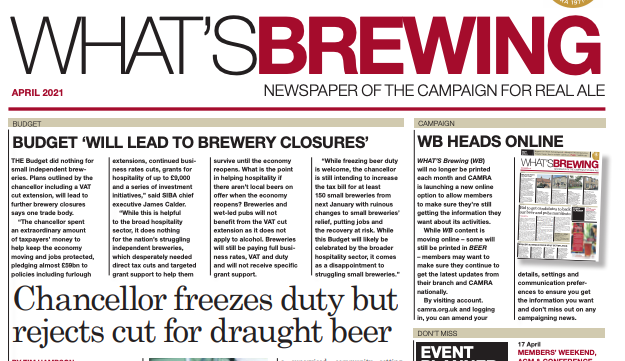Glass half full

How often do you think about glass sizes? Quite reasonably, it’s probably less often than I do. Yet in the blink of an eye, there has been quite the revolution in our beer glasses, and I didn’t want it to go unremarked.
Pouring beer to sell in multiples of half pints has been a part of the British legal system since at least the 16th century. Serving beer in third pint measures – sometimes called a nip or a stick – was a legal option by the time of the Weights and Measures Act 1985. It’s unclear whether it was permitted any earlier. It was perhaps a result of schoolchildren between 1945 and 1968 being entitled to a free third of a pint of milk per day – the specified quantities for milk and beer have run roughly in parallel in law throughout the last century.
The third pint glass hit the headlines thanks to the Frog & Parrot brewpub in Sheffield. The pub was bought by one Roger Nowill in 1985. He sold his own barley wine, Roger and Out, in third measures. In 1988, it made the Guinness Book of World Records, as the strongest regularly pulled beer in the world, then 16.9 per cent ABV.
Punters received a certificate after each third they drank. The first was a white card. The second was a yellow card with misspellings and double-printed or reversed letters. The third and final red card was entirely double-printed and the parrot on the logo was shown falling to the ground from the frog’s shoulder. After you got your red card, you weren’t allowed to order any more.
At CAMRA beer festivals, the use of oversized, lined glasses became recommended policy in 1992. The introduction of a third pint line was a natural evolution. Third glasses had enjoyed a bit of a revival in pubs as a taster glass, the Morning Advertiser reported in 2001. Perhaps capitalising on that, third pint glasses were offered at the 2006 Great British Beer Festival (GBBF) in Earl’s Court and sold out. A third of Buffy’s 3.6 per cent Norwich Terrier would set you back 80p.
There were some inevitable grumbles that third glasses were too small. But since CAMRA beer festivals want to introduce customers to a wide range of beers, it makes a lot of sense to give them the option to enjoy more beers in smaller quantities – enjoying variety while drinking responsibly. The third pint line duly found a permanent home on GBBF pint glasses the very next year.
Perhaps because the third had been a specified measure in law for so long its introduction does not seem to have stirred up anywhere near the controversy that two thirds did.
The two-third pint measure was not legally recognised as a specified measure until October 2011. Despite this late introduction, the measure was not new. A publican in Greenock, Scotland, is recorded as testing the market for the schooner – a glass of American invention – in the 1870s. His tuppeny drink was described by locals as the Wee Pint and seems to have met with relative success, spreading to other venues in the area.
The two-third schooner for beer is not to be confused with the sherry glass of the same name – a tall, waisted 3.5oz glass that was popularised in the UK in the 1960s, alongside its smaller cousin, the clipper. To add another layer of bemusement, a Canadian beer schooner is a 32oz super-sized affair!
The government’s National Weights and Measures Laboratory consulted on specified quantities and fixed package sizes in October 2008. Suggested changes included removing fixed sizes for unwrapped bread and allowing the two-third pint measure for the service of beer and cider. Veteran CAMRA member Steve Bury described the suggestion as “absurd”.
“These glasses bring no advantage to the consumer and there’s no demand for them. It will cause confusion as drinkers will need to be mathematicians to add up the number of two third of a pints they’ve drunk in an evening and work out the number of units” said Steve, writing in Hertfordshire Pints of View December/January 2009.
By early 2011, it was clear the changes were indeed to be enshrined in law. The oddly specific measurements blog, Metric Views, could barely contain its disgust.
“Despite widespread ridicule, the government has persisted with the previous government’s barmy proposal to introduce a 2/3 pint measure for draught beer and cider,” Metric Views, 5 January 2011.
Much of the negativity in the media came directly from CAMRA. Perhaps this is because two-third measures were quickly adopted by craft beer bars. They were useful for serving higher-strength keg beers, but the Campaign was still struggling with the fact that independent brewers were actually making delicious, good-quality keg at all.
Despite this, the licensed trade – and the general public – reacted positively to the new measure. The capital’s CAMRA magazine, London Drinker, reported that the first pub in the city to adopt new glassware was the Magdala in Hampstead. Heineken delivered half a million new branded two-thirds glasses to its trade customers a month after the new legislation came into force.
The glasses gained slow but steady traction. Anecdotally, they seem to have achieved general mainstream acceptance around 2018 and are now relatively ubiquitous. A deeply unscientific poll I conducted on my Twitter account suggests that around 60 per cent of licensees – in venues of all types – routinely offer third and two-third glasses to their customers.
But can we start calling them “wee pints” now please?

 view archive
view archive
 view events
view events